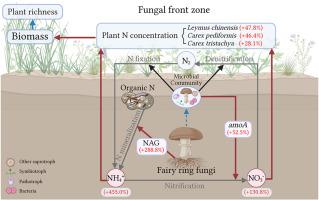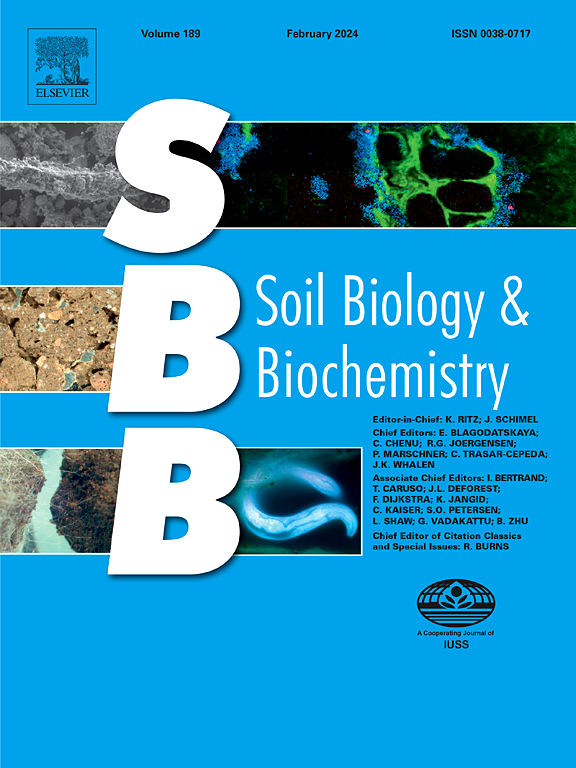Discovering the role of fairy ring fungi in accelerating nitrogen cycling to promote plant productivity in grasslands
Abstract
Soil microorganisms play a key role in the provision of plant-bioavailable nutrients, which is crucial for ecosystem functioning and plant productivity. Fairy rings are widespread features in grasslands accompanied by lush dark-green vegetation bands. This enigmatic feature is caused by increased soil bioavailable nitrogen (N) due to the expansion of fairy ring fungi (FRF). However, little is known about how FRF enhance soil bioavailable N concentrations. Here, we conducted a survey of 35 fairy rings in temperate grasslands to reveal the role of FRF in regulating soil microorganisms and N cycling using amplicon and metagenomic sequencing. The presence of FRF accelerated organic N mineralization via promoting extracellular enzyme (β-1,4-N-acetylglucosaminidase) activity, leading to a 455% increase in ammonium-N. This further stimulated nitrification to enhance nitrate-N concentration by favoring ammonia-oxidizing archaea. Concomitantly, the increased nitrate-N did not promote denitrification or affect the potential risk of N loss. Furthermore, the relative abundance of other saprotrophic and symbiotrophic fungi was significantly reduced by FRF but the changes in these fungi did not affect the activity of extracellular enzymes involved in N mineralization. Our results suggest that FRF can act as ecosystem engineer species shaping fairy rings by driving soil N cycling without the involvement of other microbial functional groups of saprotroph and symbiotroph to boost plant productivity. Thus, due to the stronger N mobilizing ability, FRF show great potential to be exploited as beneficial microorganisms in plant production and sustainable agricultural development.


 求助内容:
求助内容: 应助结果提醒方式:
应助结果提醒方式:


